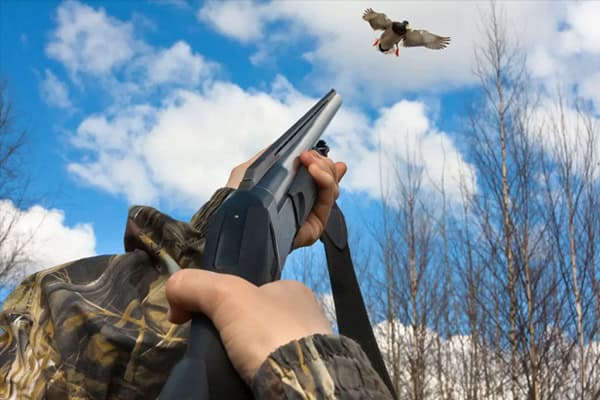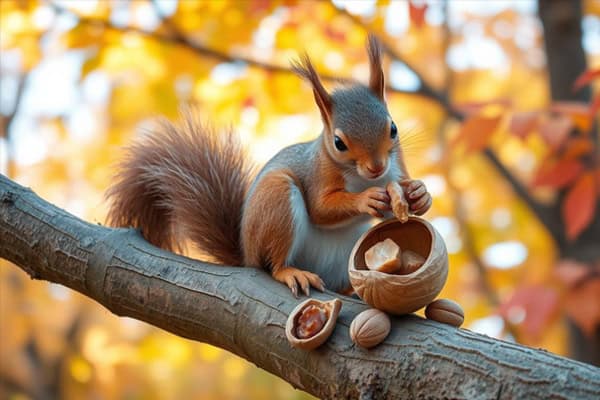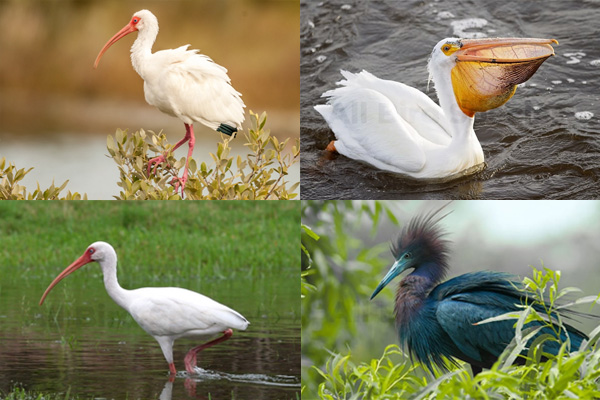Are Swans Still Protected – Are They Still Safe?
Swans have always been seen as symbols of grace, beauty, and balance in nature. But today, Are Swans Still Protected or safe? This article looks at how swans are protected and the challenges they face today.
Swans are known for their beauty and play a big role in our water ecosystems. But, their protection status might surprise you. Let’s dive into the world of swan protection, swan conservation, and how we’re working to keep these swans safe.
Introduction to Swans
Swans are large, beautiful waterfowl with long necks and elegant looks. They belong to the Cygnus genus, except for the coscoroba swan, which is in the Coscoroba genus. These birds live in wetlands in temperate climates worldwide. They are known for their swan description and swan characteristics.
What is a Swan?
A swan is a big, water-loving bird with a long, curved neck, webbed feet, and a wide, flat bill. They live near lakes, rivers, and other water places, eating aquatic plants and insects. Swans have swan species and swan taxonomy, which include many different types.
Different Species of Swans
- Mute swan (Cygnus olor)
- Whooper swan (Cygnus cygnus)
- Trumpeter swan (Cygnus buccinator)
- Tundra swan (Cygnus columbianus)
- Black swan (Cygnus atratus)
- Black-necked swan (Cygnus melanocoryphus)
There are six main types of swans, each found in different parts of the world. They all have their own swan description and swan characteristics. The only exception is the coscoroba swan, which is in the Coscoroba genus.
| Swan Species | Average Wingspan | Average Weight |
|---|---|---|
| Mute Swan | over 8 feet | 23 pounds |
| Tundra Swan | over 5 feet | more than 14 pounds |
| Trumpeter Swan | – | 23 pounds |
The Role of Swans in Ecosystems
Swans are not just beautiful birds; they are key to keeping aquatic ecosystems healthy. They eat different plants and small animals. This helps spread seeds and eggs, which helps plants grow and other species survive.

Swans also stir up the bottom of the water as they swim. This action helps move nutrients around, making the ecosystem healthier. This supports a wide variety of plants and animals.
| Swan Ecological Importance | Impact on Ecosystems |
|---|---|
| Spread of seeds and animal eggs | Supports plant growth and species survival |
| Stirring up sediment while swimming | Facilitates nutrient circulation and ecosystem health |
| Consumption of vegetation and small animals | Maintains balance and diversity in aquatic environments |
Swans are vital to the health of ecosystems. They keep the balance between plants and animals. This makes these environments lively and strong.
Swan Scientific Names and Classification
Swans have unique scientific names within the Cygnus genus, except for the coscoroba swan, which is in Coscoroba. There are six true swan species with their own names:
- Whooper swan (Cygnus cygnus)
- Tundra swan (Cygnus columbianus)
- Mute swan (Cygnus olor)
- Black swan (Cygnus atratus)
- Black-necked swan (Cygnus melancoryphus)
- Trumpeter swan (Cygnus buccinator)
The coscoroba swan’s name is Coscoroba coscoroba. These swans are among the biggest flying birds. The largest can be over 1.5 meters long and weigh over 15 kilograms.
The genus and species of swans are key to their scientific classification and taxonomy. Knowing about each swan’s unique traits and where they live helps us value these amazing birds more.
Conservation Status of Swans
The conservation status of swans is generally good. All swan species are listed as “Least Concern” by the International Union for Conservation of Nature (IUCN). This means their populations are stable or growing worldwide. But, they still face threats like habitat loss, pollution, and diseases. These threats need ongoing efforts to keep their numbers healthy.
Are Swans Endangered?
No swan species are endangered now, but some, like the tundra swan, were once hunted almost to extinction. The trumpeter swan, for example, had only 69 birds left in the U.S. by the late 1930s. Thanks to conservation and reintroduction programs, their numbers have grown to over 3,000 in Michigan by 2015.
It’s important to keep monitoring and protecting swans to maintain their populations. The North American Trumpeter Swan Survey has tracked their health since 1968. Trumpeter swans were taken off the U.S. endangered list in 1968 but are still protected by the Migratory Bird Treaty Act.
The swan conservation status is good, but we must stay vigilant to help them thrive in the future.
| Swan Species | IUCN Conservation Status | Population Trend |
|---|---|---|
| Mute Swan | Least Concern | Increasing |
| Trumpeter Swan | Least Concern | Increasing |
| Tundra Swan | Least Concern | Stable |
| Black Swan | Least Concern | Stable |
| Black-necked Swan | Least Concern | Increasing |
Habitats and Geographic Distribution of Swans
Swans are majestic waterfowl found in many places around the world. They live in everything from calm freshwater wetlands to coastal areas. These areas meet their unique needs perfectly.
Where Do Swans Live?
Swans call lowland, freshwater wetlands like lakes, ponds, and slow rivers home. Some live in brackish and saltwater coastal areas too, where food is plentiful and nesting spots are good. Swans live in both the Northern and Southern Hemispheres.
In the north, you’ll find mute, whooper, trumpeter, and tundra swans. In the south, black, black-necked, and coscoroba swans call home.
Many swans migrate to find food when their homes freeze over in winter. But, some stay if the climate is mild enough.
The mute swan lives in places like Suisun Marsh and Petaluma Marsh Wildlife Area in California. Introduced in the late 1800s, they now live in many states, from Washington to Florida.
The trumpeter swan mainly lives in the Nearctic region. Most are in Alaska, Canada, and the northern U.S. They like wetlands with open water, rivers, and coastal areas. They prefer salt, fresh, or brackish water for food and nesting.
Swans are important in their ecosystems. They shape the landscape and interact with many plants and animals in their wetland homes.
Threats to Swan Populations
Swans are still facing threats that could change their numbers. Habitat loss due to human development is a big challenge. Wetlands and waterways are being turned into homes, businesses, or farms. This means swans are losing where they live and find food.
Pollution and contamination of waterways is another big threat. Swans can get sick from toxins and pollutants in the water. This can cause health problems, make it hard for them to have babies, and even kill them.
- The spread of avian diseases, like avian influenza, is a big risk. These diseases can spread fast, making many swans sick and dying.
- Invasive species, like the mute swan, can also be a problem. They compete with native swans for food and homes.
The Trumpeter Swan has made a big comeback, going from 3,700 in 1968 to over 63,000 in 2015. But, they still have challenges. They are missing from much of their old territory, and they have low genetic diversity. This could make them less able to adapt in the future.

We need to keep watching and protecting swans to keep their numbers healthy. Groups like The Trumpeter Swan Society are working hard. They do restoration projects, research, science projects, and speak up for these amazing birds.
Are Swans Still Protected?
In the United States, swan protection laws are still in effect. These laws protect all swan species. They make it illegal to hunt, kill, capture, or own migratory birds, including swans. Some swan species, like the trumpeter swan, are no longer endangered but are still protected by federal laws.
Even with progress in swan conservation regulations, swans still face threats. It’s important to keep these laws and conservation efforts going. This ensures the safety and well-being of swans in the United States.
| Key Fact | Details |
|---|---|
| Trumpeter Swan Population | The state population of Trumpeter swans in Wisconsin now exceeds 5,000 birds, with concentration in various counties across the state. |
| Trumpeter Swan Nesting | Trumpeter swans usually do not nest until they are three to six years old, with some potentially nesting at two years. They often mate for life and build their nests on top of muskrat or beaver lodges, or they pile sedges and cattail tubers into a mound, with nesting territories ranging from 6 to 150 acres. |
| Trumpeter Swan Reproduction | Trumpeter swans typically lay a clutch of five to nine eggs, with the pen incubating the eggs for about 32-34 days. Trumpeter cygnets hatch around June and weigh about 7 ounces, reaching about 20 pounds by the time they are 15 weeks old. The first flights of trumpeter cygnets occur in late August or early September and are typically short, with full flying capability around 14-15 weeks of age. |
| Mute Swan Population | Mute swans are an introduced species in North America, with the largest populations outside of their native range found in North America. The mute swan is one of the heaviest extant flying birds with males (cobs) averaging from about 10.6 to 11.87 kg (23.4 to 26.2 lb) and females (pens) averaging about 8.5 to 9.67 kg (18.7 to 21.3 lb). |
| Mute Swan Protection | Mute swans are safeguarded as wild birds under the 1981 Wildlife and Countryside Act, aiming to protect them from harm or disturbance. The legal implications of harming mute swans can result in severe consequences, including hefty fines or imprisonment. |
In conclusion, swans in the United States are protected by swan protection laws and swan conservation regulations. This ensures their legal status is maintained. While some species have recovered, we still need to work hard to protect these beautiful birds for the future.
Human-Wildlife Conflicts Involving Swans
Swans are known for their beauty, but they can also cause problems with humans and the environment. These issues come from how swans affect natural resources, agriculture, health, and safety, and nuisance problems.
Impact on Natural Resources
Non-native mute swans can harm native wildlife and their homes. They compete with other birds for food and places to nest, pushing out native species. Their big appetite for plants in the water can destroy important habitats and food sources for many water animals.
Agricultural Damage
Swans can be a threat to farms and gardens. Their size and hunger for crops can cause a lot of damage. In places like Maryland, the growing number of mute swans is seen as a problem for farmers.
Human Health and Safety Risks
Swan attacks on people are rare, but they can happen when swans protect their nests. These situations can be dangerous in places where people and swans meet. Swans can also spread diseases like avian flu and Newcastle disease to humans and other animals.
Nuisance Problems
Swans can cause problems with their large size and many offspring. They can leave behind a lot of poop, make water dirty, and mess up natural areas. The growing number of swans, especially the mute swan, has led to efforts to manage their populations.
To deal with swan-human conflicts, we need to use different methods. This includes changing their living areas, keeping them out, and controlling their numbers. By understanding swans’ effects, we can work on solutions to live with them safely.
Identifying Swan Damage
Figuring out if swans are behind damage to plants or other issues can be tough. Their effects aren’t always easy to see right away. But, some signs can help spot swan damage:
- Floating, uprooted aquatic vegetation – Swans like to pull up plants from the bottom, making them float on top.
- Large mats of vegetation around swan nests – They collect and pile up plants to build their nests, leaving round patterns behind.
- Damage to submerged plants – It’s harder to see, but swans eating underwater plants shows up when the water level goes down, showing bare spots.
- Swan fecal contamination – Finding swan poop in water or on land shows they’re around and might be causing problems.
By watching for these signs of swan impacts, you can spot swan damage better. This helps you fix any swan vegetation damage or other issues they cause.
| Indicator | Description |
|---|---|
| Floating, uprooted aquatic vegetation | Swans uproot plants from the bottom, making them float on top. |
| Large mats of vegetation around swan nests | They gather and pile up plants to build their nests, leaving round patterns. |
| Damage to submerged plants | Swans eating underwater plants is hard to see, but it shows up when the water level drops, revealing bare spots. |
| Swan fecal contamination | Finding swan poop in water or on land shows they’re around and might be causing problems. |
By paying attention and noticing these signs of swan impacts, you can spot swan damage well. This lets you take steps to fix any swan vegetation damage or other issues they cause.
Management Methods for Swan Issues
Managing conflicts with swans often means using a detailed Integrated Pest Management (IPM) plan. This plan combines different methods like changing their habitat and keeping them out. These steps help solve the main problems and keep swans away from trouble spots.
Habitat Modification
Changing the swan’s living area is a key way to manage swan issues. This means taking away food, nesting materials, and other things that draw them to certain places. By doing this, you make the area less inviting for swans, helping them not to nest or stay in places they shouldn’t.
Exclusion Methods
Exclusion techniques are also useful to keep swans out of certain areas. You can use fences, nets, or other barriers to stop them from getting in. These methods work well to protect natural areas, farms, or places where swans could be a danger to people.
It’s key to think carefully and do these things right to avoid harming other animals and the environment. Always talk to local wildlife experts and follow the best ways to manage swan populations. This helps make sure it’s done in a kind and lasting way.
| Technique | Description | Effectiveness |
|---|---|---|
| Habitat Modification | Removing or limiting access to food sources, nesting materials, and other resources that attract swans | Highly effective in deterring swans from problem areas |
| Exclusion Methods | Installing physical barriers like fencing or netting to restrict swan movement and access | Highly effective in preventing swans from entering specific locations |
Read My Previous Articles
| Mountain Bluebird – Facts, Diet, Habitat & Pictures |
| Top 13 Birds Of Africa (ID Guide With Pictures) |
| Cockatoos in Australia |
| Owl Legs: Everything You Need To Know |
Frequently Asked Questions
Are swans still protected by laws and regulations in the United States?
Yes, swans are protected by the Migratory Bird Treaty Act in the U.S. This law stops people from hunting, killing, catching, or owning migratory birds, including swans.
What is the current conservation status of swans?
Swans are listed as Least Concern by the IUCN. Their numbers are stable or growing. But, they still face dangers like losing their homes, pollution, and diseases. So, we need to keep working to protect them.
Where do swans typically live and what habitats do they prefer?
Swans live in lowland wetlands like lakes, ponds, marshes, and slow rivers. They can also be found in some coastal areas with brackish or saltwater. Different swan types live in the Northern and Southern Hemispheres.
What are the main threats to swan populations?
Swans face threats like losing their homes to human activities, pollution, diseases like avian flu, and competition with invasive species like the mute swan.







